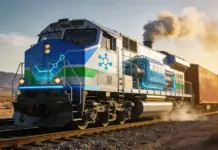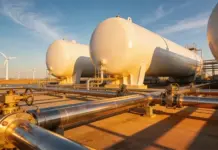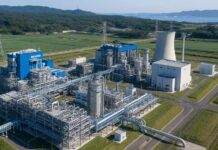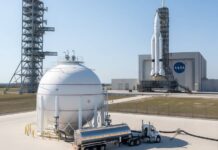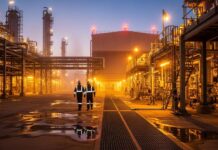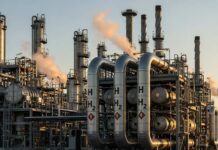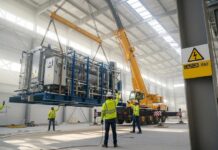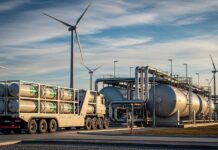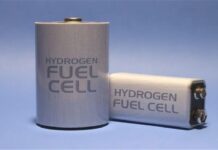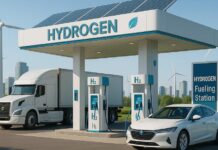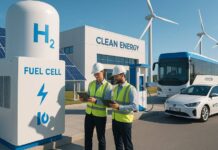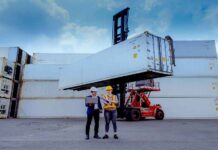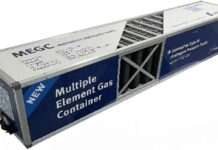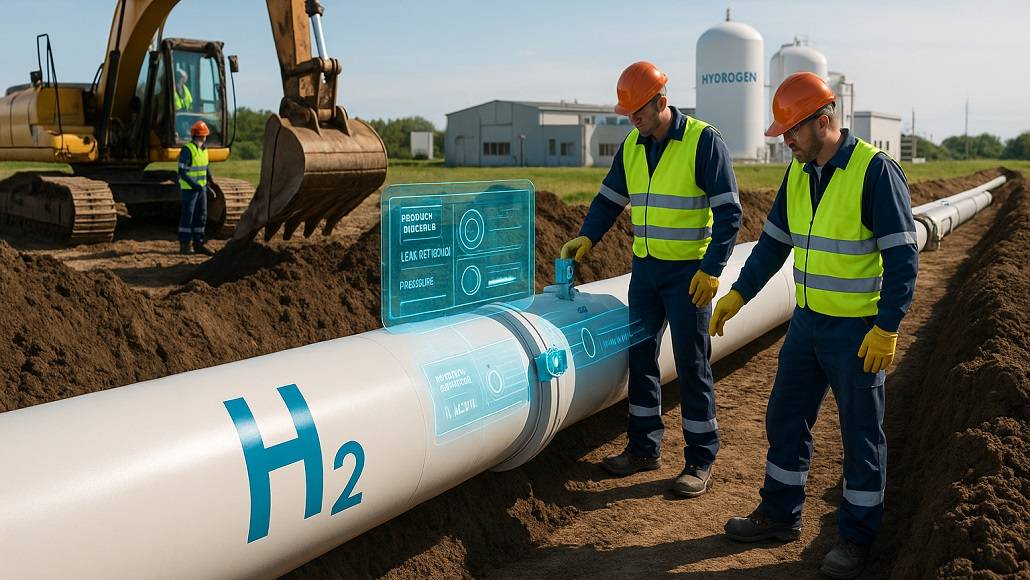The global requirement for clean energy solutions has elevated hydrogen to a central role in the energy transition. Widely known for its ability to store and deliver energy with zero emissions at the point of use, hydrogen is playing a key role in decarbonizing industries, transportation, and power systems. But, its potential cannot be maximized without having efficient and safe transportation infrastructure in place. Meet hydrogen pipelines—new-generation pipes aimed at shipping hydrogen by volume. Pipelines have the potential to streamline hydrogen delivery and lower costs, but at great technical, safety, and economic hurdles to overcome.
Hydrogen pipelines are seen as a crucial component of a resilient network that connects producers, storage, and consumers, as hydrogen economies develop rapidly worldwide. But, in order to be considered the foundational element for hydrogen logistics, pipelines face material limitations, safety challenges, and logistical issues. The creation of next-generation hydrogen pipelines is, therefore, a convergence of engineering design, regulatory guidelines, and multidisciplinary collaboration.
The Promise of Hydrogen Pipelines
Hydrogen pipelines represent a scalable and efficient way to pipe hydrogen over long distances, a requirement for industries and economies moving towards clean energy sources. When compared to other modes of transportation such as road tankers or trains, pipelines provide constant supply with low operational emissions and lower transportation costs per unit.
Transportation by dedicated pipelines increases the viability of centralizing hydrogen production in large-scale facilities, where solar and wind power can be used to power electrolysis. Centralized production centers can distribute hydrogen to remote industrial clusters, urban areas, and export terminals through an integrated pipeline network. This method not only reduces production costs due to economies of scale but also decreases carbon emissions compared to conventional transport modes.
In addition, hydrogen pipelines pave the way for the formation of a hydrogen grid similar to that built out for natural gas at present time. Having a hydrogen grid creates integration between supply and demand and allows hydrogen to be distributed in an orderly fashion when demand changes in the market. Such a grid is central to making hydrogen’s contribution in energy storage, grid balancing, and the decarbonization of hard-to-abate industries possible.
Challenges in Hydrogen Pipeline Deployment
Hydrogen pipelines represent a scalable and efficient way to pipe hydrogen over long distances, a requirement for industries and economies moving towards clean energy sources. When compared to other modes of transportation such as road tankers or trains, pipelines provide constant supply with low operational emissions and lower transportation costs per unit.
Transportation by dedicated pipelines increases the viability of centralizing hydrogen production in large-scale facilities, where solar and wind power can be used to power electrolysis. Centralized production centers can distribute hydrogen to remote industrial clusters, urban areas, and export terminals through an integrated pipeline network. This method not only reduces production costs due to economies of scale but also decreases carbon emissions compared to conventional transport modes.
The next-gen hydrogen pipelines are seen as a crucial component of a resilient network that connects producers, storage, and consumers, as hydrogen economies develop rapidly worldwide. But, in order to be considered the foundational element for hydrogen logistics, pipelines face material limitations, safety challenges, and logistical issues. Such a grid is central to making hydrogen’s contribution in energy storage, grid balancing, and the decarbonization of hard-to-abate industries possible.
Although next-gen hydrogen pipelines are promising, their implementation is riddled with issues that require creative solutions. The challenges arise due to hydrogen’s physical and chemical properties, which are quite distinct from conventional fuels such as natural gas.
- Material Compatibility
Hydrogen has been shown to embrittle metals, a process that degrades pipeline materials with time and exposes them to leaks or failure. It does so by permeating the microstructure of the metal, making it reduce the tensile strength and ductility to a degree. Current pipelines used for natural gas could not handle these stresses if repurposed for hydrogen without reinforcements or replacements in the newer pipelines.
Materials for the pipelines that are resistant to hydrogen embrittlement will be critical. Research is currently also being done for the materials that would provide even better resistance to Hydrogen and advanced polymer linings. Coating methods are also available that provide a barrier against hydrogen diffusing into the wall of pipelines that could limit the respective leakage from the high source.
- Safety Concerns
Hydrogen is extremely flammable with a wide flammability range meaning it can ignite at much lower concentrations than natural gas. Hydrogen’s low molecular weight also means that can escape through very small flaws in pipelines. Thus, greater safety measures and protocols are required to prevent accidents and enhance public acceptance to create a hydrogen infrastructure.
Currently, monitoring technologies such as sensors capable of detecting very small hydrogen leaks are integrated into pipeline systems with high enough reliability to enhance safety. Real-time monitoring systems and automated shut-off valves for pipeline systems are also being integrated to lower risks where possible and enable fast reactions in the event of a hydrogen incident.
- High-Pressure Requirements
Transport of hydrogen relative to natural gas almost always needs to be done at higher pressures due to its lower energy density in the gas phase. Pipelines therefore need to have a high level of pressure, which mean strong materials and great engineering. High-pressure hydrogen pipelines also elevate safety concerns as the risk of leaks, as well as the possibility of rupture, improves with pressure. Advanced engineering technology is being utilized to address these issues, including pipeline designs that contain reinforced components and the optimization of pressure regulation systems. In addition, studies around blending hydrogen with natural gas provide a near-term possibility that utilizes existing pipeline infrastructure and would lessen the pressure required for pure hydrogen transport.
Table: Key Challenges and Solutions in Hydrogen Pipelines
| Challenge | Proposed Solutions |
| Material Compatibility | Hydrogen-resistant alloys, advanced coatings, polymer linings. |
| Safety Concerns | Leak detection sensors, automatic shut-off valves, emergency response systems. |
| High-Pressure Requirements | Reinforced designs, pressure regulation systems, hydrogen-natural gas blending. |
Technological Innovations in Hydrogen Pipelines
Innovations in pipeline technology lead the way in addressing these issues, driving the innovation of hydrogen transport systems that are both safer and more efficient. Whether in material sciences or in their digitalization trends, advances in the technological side of pipelines act as a path to future hydrogen pipelines.
- Advanced Materials
New developments in materials sciences allow for advanced design of pipelines for hydrogen transport and produce new alloys with higher resistance to hydrogen embrittlement via advanced metallurgical processes. The operational life of pipelines and reduced maintenance costs add to improved durability, reliability and cost savings associated with the new materials.
Polymers and hybrid composites are also gaining popularity as alternative materials for hydrogen pipelines. These nonmetallic solutions are secure from hydrogen embrittlement and other benefits include flexibility and weight, however, some functionality and longevity at high pressures will be subject to future studies.
- Digital Monitoring Systems
The combination of digital technologies is changing hydrogen pipeline operations. Leak detection monitoring using machine learning software and monitoring by the sensors are connected by the Internet of Things, which will monitor pipeline integrity so they can preemptively notify operators of leaks before they cause critical failure. These types of systems provide real-time data that can be used to understand what is in the pipeline, inform operators of potentially leaks and failures.
Digital twin technology is another significant technology. Digital twin is a digital representation of the pipelines allowing operators to run a number of models through scenario modeling as well as suggest physical performance improvements, while also scenario modeling future operational and environmental conditions with associated costs. This predictive level of capability improves decision-making and reduces downtime.
- Regulatory and Economic Considerations
The effective rollout of next-gen hydrogen pipelines must be supported by a facilitating regulatory environment and economic viability. Policymaking involves establishing standards of safety, offering economic incentives, and promoting cross-border collaboration.
Further subsidies through the creation of pipelines and tax credits for hydrogen manufacture and use can create infrastructure. Consistent safety regulation across regions ensures tracking of consistency and helps with international cooperation for the development of transnational pipelines. The economic feasibility of hydrogen pipelines warrants caution. At times it may seem expensive upfront, however the long-term payback is much greater, including reductions in transportation costs in the long term, grid stability, and decarbonsing the economic advantage is well worth the effort. Cooperative funding mechanisms, with governments, investors, and industry will be essential to funding viability.
Sustainability and Future Outlook
Hydrogen pipelines are characterized by more than just being a transportation system, they are facilitators of a low-carbon energy future. Through the bulk supply of green hydrogen, hydrogen pipelines will be critical in powering decarbonization of industry, transport, and power generation. Additionally, their connection to renewable energy grids stabilizes the grid and enables the overall transition to clean energy.
In the future, the establishment of hydrogen hubs—geographic areas with concentrated production, storage, and consumption—will continue to propel the utilization of hydrogen pipelines. The hubs will be nodes of industrial decarbonization and anchors for widening pipeline networks.
Conclusion
Next-gen hydrogen pipelines form the backbone of an international hydrogen economy, allowing the efficient and safe transportation of hydrogen at scale. Material compatibility, safety, and high-pressure demands are still challenges, but technological innovation and industry collaboration are laying the groundwork for revolutionary solutions.
With new materials, digital tracking mechanisms, and supportive regulatory frameworks, the ambition of a hydrogen pipeline network that promotes resilience is becoming more feasible. As the world accelerates toward clean energy, hydrogen pipelines will not only overcome the logistical challenges but also harness hydrogen’s full potential as a key enabler of a sustainable and decarbonized future.

